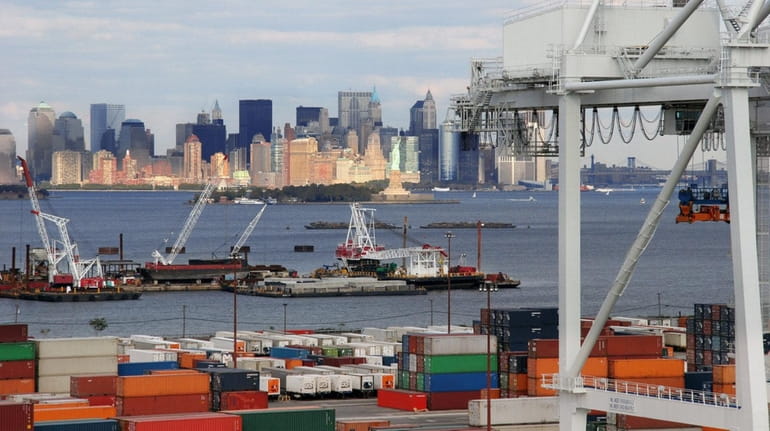NY factories see rise in foreign export revenues, bank says

The Cape Liberty Cruise container port in Bayonne, New Jersey, with a view of New York City. Credit: Getty Images / Janine Lamontagne
International trade is more important to New York State factories than it was two years ago, despite the concerns of President Donald Trump about free trade pacts such as the North American Free Trade Agreement.
The Federal Reserve Bank of New York said Wednesday that a typical plant in the state derived 10.1 percent of its revenue from exports in the past year. That’s up from 9.6 percent for the typical plant in 2015, according to surveys conducted by the bank.
In addition, the number of manufacturers saying 20 percent or more of their revenue comes from foreign sales rose from 15 percent to 22 percent in the two-year period.
The bank polled about 100 factories across the state earlier this month and in October 2015.
“Seventy-three percent of manufacturers reported that at least some revenues had been derived from abroad,” the New York Fed said in a statement. “These results closely matched those in the 2015 survey.”
Canada is the top export destination this year, accounting for 41 percent of customers, followed by Asia, 16.5 percent, and Europe, 14.5 percent. Results from two years ago weren’t available.
The bank said it found most manufacturers haven’t changed the amount of money and personnel time they devote to increasing foreign sales between 2015 and this year.
Separately, the bank said the importance of trade to retailers and other service firms in the metropolitan area is about the same from 2015 to this year.
The typical service firm derived 7.6 percent of its revenue from exports in the past 12 months, down from 7.8 percent in 2015.
The bank polled about 100 service firms on Long Island, in New York City and the northern suburbs earlier this month. About half said they receive some revenue from exports, unchanged from the 2015 survey.
Among service firms, Europe was the top destination, accounting for nearly 36 percent of customers, followed by Canada, 23.7 percent, and Asia, 20.1 percent.
Negotiators began talks Wednesday aimed at reworking the terms of NAFTA.
